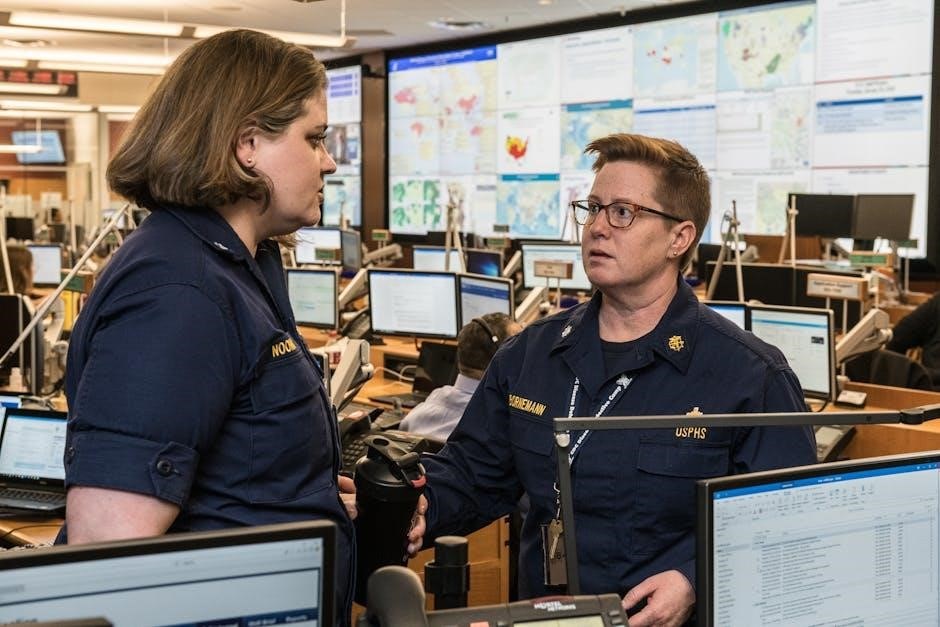
Hersey Blanchard Situational Leadership is a model that enables leaders to influence others effectively, with a focus on followers and leadership style, using a parabola to denote support and direction needed by supervisees, according to their maturity levels always․
Definition and History
The Hersey Blanchard Situational Leadership model was developed by Dr․ Paul Hersey in the late 1960s, and is often referred to as organized common sense․ This model is based on the idea that there is no single best style of leadership, and that leaders must adapt their approach to the maturity level of their followers․ The model has been widely used in leadership training programs and has been incorporated into management development initiatives at many organizations․ The definition of situational leadership is closely tied to the concept of leadership flexibility, and the ability of leaders to adjust their style to meet the needs of their followers․ The history of the model is rooted in the work of Dr․ Hersey and his colleagues, who sought to create a framework for understanding the complex interactions between leaders and followers․ Over time, the model has evolved to include new ideas and concepts, but its core principles remain the same․ The model is widely used today, and is considered a key component of effective leadership development programs․ It continues to be a popular topic in the field of management and leadership․

Key Features of the Model
Model features include flexibility and adaptability, focusing on follower maturity, with leaders adjusting style to meet needs, using a parabola to denote support and direction, always effectively․
Focus on Followers
The Hersey Blanchard Situational Leadership model places a significant emphasis on followers, recognizing that their maturity levels and needs play a crucial role in determining the most effective leadership style․ This approach focuses on the abilities and willingness of followers to take responsibility for their work, rather than solely on the leader’s traits or behaviors․ By considering the follower’s maturity, leaders can adapt their style to provide the necessary support and direction, thereby enhancing overall performance and job satisfaction․ The model categorizes followers into different maturity levels, ranging from immature to mature, and prescribes corresponding leadership styles to match these levels․ This focus on followers enables leaders to develop a more nuanced understanding of their team members’ needs and to respond accordingly, ultimately leading to more effective leadership and better outcomes․ The model’s emphasis on follower maturity has been widely adopted in leadership training programs and has proven to be a valuable tool for leaders seeking to improve their effectiveness․
Leadership Style
The Hersey Blanchard Situational Leadership model identifies four primary leadership styles, each corresponding to a specific level of follower maturity․ These styles include telling, selling, participating, and delegating․ The telling style is characterized by a high level of direction and a low level of support, while the selling style provides a moderate level of direction and support․ The participating style offers a low level of direction and a high level of support, and the delegating style involves a low level of direction and support․ Leaders can adapt their style to match the maturity level of their followers, using a more directive approach with less mature followers and a more delegative approach with more mature followers․ This flexible approach to leadership enables leaders to respond effectively to changing situations and to develop the skills and abilities of their followers․ By using the appropriate leadership style, leaders can enhance follower performance, job satisfaction, and overall organizational effectiveness․ The model’s leadership styles have been widely adopted and have proven to be a valuable tool for leaders seeking to improve their effectiveness․

Development of the Model
The model was developed by Paul Hersey and Ken Blanchard, evolving over time to incorporate new ideas and concepts, focusing on leadership and follower maturity, always․
Hersey and Blanchard’s Contribution

Hersey and Blanchard’s contribution to the field of leadership is significant, as they introduced a model that is still widely used today․ Their work focused on the idea that leadership style should be adapted to the maturity level of the followers․ They identified four different leadership styles, ranging from telling to delegating, and emphasized the importance of adjusting the style to the specific situation․ The model has been influential in the development of leadership training programs and has been used in a variety of contexts, including business and education․ Hersey and Blanchard’s work has also been built upon by other researchers, who have expanded and refined the model․ Overall, their contribution has had a lasting impact on the field of leadership and continues to be relevant today․ The model’s emphasis on flexibility and adaptability has made it a valuable tool for leaders in a wide range of situations․ Their work remains an important part of the ongoing discussion about effective leadership․
Emotional Intelligence
Emotional intelligence plays a crucial role in the Hersey Blanchard Situational Leadership model, as it enables leaders to understand and adapt to the emotional needs of their followers․ According to Daniel Goleman, emotional intelligence consists of self-awareness, self-regulation, motivation, empathy, and social skills․ Leaders with high emotional intelligence are better equipped to adjust their leadership style to the maturity level of their followers, thereby creating a more effective and productive work environment․ The model emphasizes the importance of leaders being able to read the emotional cues of their followers and respond appropriately․ By doing so, leaders can build trust, foster open communication, and create a positive work culture․ Emotional intelligence is essential for leaders to navigate complex social situations and make informed decisions that take into account the emotional needs of their followers․ The integration of emotional intelligence into the Hersey Blanchard model provides a more comprehensive understanding of effective leadership and its impact on organizational success․ Effective leaders must be able to balance their own emotions with the emotional needs of their followers․

Applications of the Model
The model is applied in leadership training programs and management development to enhance leadership skills and effectiveness always used․
Leadership Training Programs
Leadership training programs are designed to enhance leadership skills and effectiveness, and the Hersey Blanchard Situational Leadership model is often incorporated into these programs․ The model provides a framework for leaders to adapt their style to the needs of their followers, and it has been widely used in leadership development initiatives․ Many organizations have adopted the model as a key component of their leadership training programs, and it has been used to train over one million managers worldwide․ The model’s focus on situational leadership and its emphasis on adapting to the needs of followers make it a valuable tool for leaders at all levels of an organization․ By incorporating the Hersey Blanchard Situational Leadership model into leadership training programs, organizations can help their leaders develop the skills and flexibility they need to succeed in a rapidly changing business environment․ The model’s practical approach and emphasis on real-world application make it a popular choice for leadership development programs․
Management Development
Management development is a critical aspect of organizational success, and the Hersey Blanchard Situational Leadership model plays a significant role in this process․ The model helps managers develop the skills they need to lead effectively, including the ability to adapt their leadership style to the needs of their followers․ By using the model, managers can improve their relationships with their team members, increase employee engagement, and enhance overall productivity․ The model’s focus on situational leadership also helps managers develop the flexibility they need to respond to changing circumstances and navigate complex organizational environments․ As a result, the Hersey Blanchard Situational Leadership model has become a popular tool for management development initiatives, and it is widely used in organizations around the world․ The model’s practical approach and emphasis on real-world application make it a valuable resource for managers at all levels of an organization, from frontline supervisors to senior executives․ Effective management development is essential for driving business success, and the Hersey Blanchard Situational Leadership model is an important part of this process․
 valentía 2 libro pdf descargar gratis
valentía 2 libro pdf descargar gratis  lhsaa handbook pdf
lhsaa handbook pdf  schematic solar panel wiring diagram pdf
schematic solar panel wiring diagram pdf  ions worksheet answer key pdf
ions worksheet answer key pdf  tier 3 vocabulary list pdf
tier 3 vocabulary list pdf  the last castle jack vance pdf
the last castle jack vance pdf  scag freedom z owners manual
scag freedom z owners manual  instructions for mobi thermometer
instructions for mobi thermometer  guiding light alan spaulding
guiding light alan spaulding